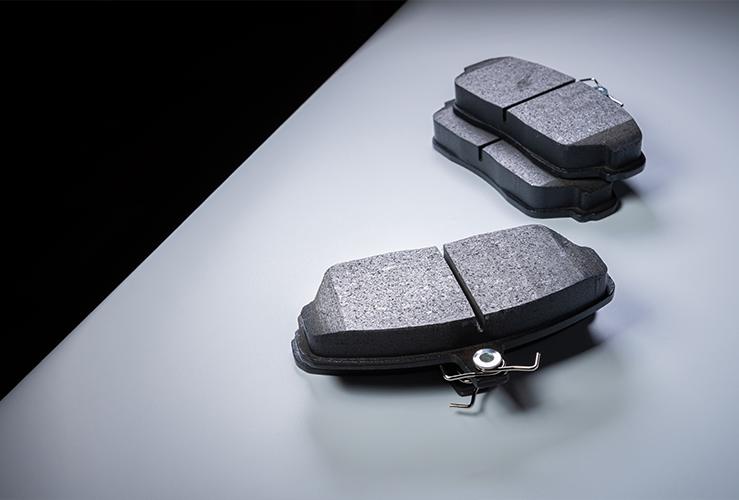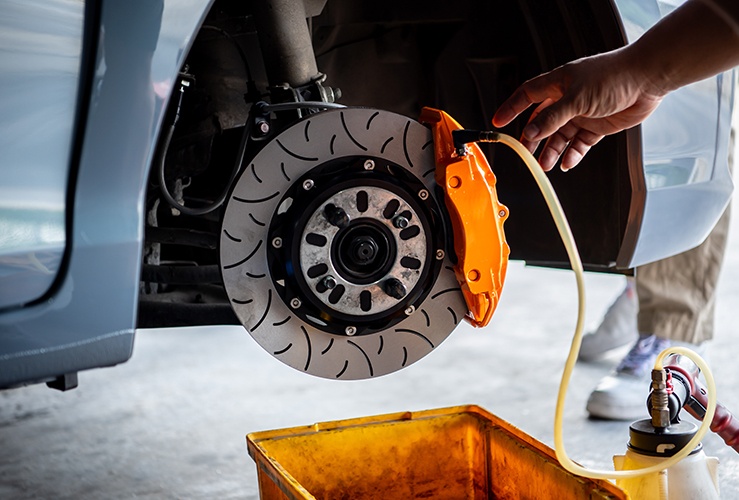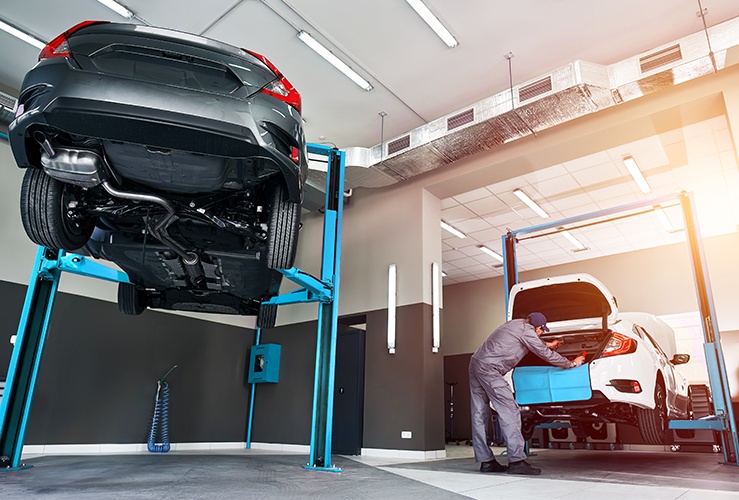Your brake pads, together with brake callipers and brake discs, comprise one of the most important safety systems on your car. As such, it's critical that these are in good working condition. Here, we'll discuss how brake pads work, signs your brake pads may need replacing, and how much it will cost to do so.
How much to replace brake pads?
The cost to replace brake pads can vary depending on a number of factors. However, the biggest influence on cost is the material your pads are made from (see below).
It can cost between £200 and £500 to replace your brake pads. How much to change brake pads will vary based on your make and model, and how difficult it is to source parts (e.g. finding pads for a classic car will be more tricky than for a newer model).
Note that the cost for front brake pad replacement is higher than for the rear. This is because they are larger and more complex (due to heavier braking pressure) and require extra ventilation components.
Brake pad material types:
- Organic: Lowest brake pad cost, but don't last as long as other materials.
- Low metallic: These last longer but can be noisy.
- Semi-metallic/sintered: These combine metals like bronze and copper, alongside other materials. These deliver excellent braking performance and last longer than other brake pads. The big downside is that they wear down the brake discs more quickly, adding to the cost of ownership.
- Ceramic: These offer superb braking performance, less brake dust, and quieter operation. The drawback is they cost more than other brake pad types.
What are brake pads?
Brake pads are an essential part of your braking system. The pads sit inside the brake callipers which, when the brake pedal is depressed, are pushed against the brake discs, causing the vehicle to slow down and eventually come to a stop.
Both brake pads and brake discs wear down over time. Callipers seldom need to be replaced unless they have been damaged by twisted rotors or have been used with worn-out brake pads for an extended period.
When do brake pads need replacing?
As a rough guide, brake pads will need to be replaced every 30,000 to 70,000 miles. Since the average annual mileage for a UK car is just over 7,000 miles, you can expect to replace your brake pads every 4-10 years.
How quickly your brake pads wear down depends on a number of factors, including:
- Where you drive: If you often make motorway trips, your brake pads may wear down more slowly because less braking is required on these journeys. Conversely, lots of stop-start urban motoring will wear down brake pads more quickly.
- How you drive: Regular aggressive accelerating and braking will cause your brake pads to wear down more quickly.
- Quality of brake pads: Saving money on lower-quality brake pads could cost you more in the long run, since you'll probably need to replace your brake pads more often. Poorer quality pads may wear down unevenly, or the back-plate assembly may fail sooner.
- Faulty callipers: Damaged callipers may cause brake pads to wear down unevenly, meaning they need to be replaced sooner than they otherwise would.
- Damaged brake discs: Brake pad material can wear down faster if brake discs are damaged.
- Brake rotor damage: If rotors deteriorate unevenly, it can cause uneven wear on brake pads.
- Brake hose problems: If brake lines and the connected hoses are damaged by heavy braking, the piston calliper can shift, in turn moving the rotor and pad into the incorrect position, causing the pad to wear down at a quicker rate than the other brake pads.
How to check brake pads?
On some cars, you can look between the wheel spokes and check the brake pads. The outer pad will be pressed against the brake discs. Less than 3mm means you should get your brake pads checked. Some pads have wear indicators which make it easier to determine their condition. You may need a torch to carry out the inspection.
Checking pads by removing the wheel
By removing the wheel, you will be able to conduct a more complete check. However, for the average motorist, this is not a practical - or particularly safe - option. If you have the experience and confidence to do this, you would need to elevate the car about 6" off the ground using a jack, undo the lug nuts and remove the wheel. This will give you a clear view of the brake pads.
Safety tips for removing a wheel:
- Apply the handbrake.
- Ensure no passengers are inside.
- Use wheel chocks to prevent the car from rolling.
In all likelihood, your best bet is to have a trained mechanic complete a more in-depth inspection - particularly if you have noticed other signs that your brake pads are worn.
Should you replace brake discs at the same time?
In most cases, it's best to replace brake discs at the same time as brake pads. This is because older brake discs may have become warped over time, which could result in uneven contact with the brake pads - and therefore accelerated pad wear, noise, and overall braking performance.
Cost of replacing brake pads and discs
Replacing a pair of brake discs costs between £125 and £350, so replacing both pads and discs will cost between £325 and £850. Expect to pay considerably more than this when replacing both front and rear pads and discs. As you might expect, doing this on a sports or luxury car is likely to cost more than a small family car.
A complete brake replacement cost - which could include callipers, servos, drums, etc. - would, of course, cost much more. In some cases, brake replacement costs will be more than the value of the entire vehicle.
Should you replace both front and rear brake pads at the same time?
Your car's front brake pads will wear out sooner than your rear ones because they take most of the load when braking occurs. As such, in most cases, you will only need to replace the front pads.
Signs your brake pads are worn
- Screeching: Brake pads are actually designed to screech once the contact material has worn down to a certain level. If you hear screeching, it's time to get your brake pads checked over by a professional. If you still experience screeching after pad replacement, you may have another issue with your braking system - such as glazed rotors.
- Worn brake pad warning light: Your car may have a warning system that detects when brake pads have become worn. Don't ignore this warning - get your brake pads checked over.
- Visible wear and tear: Look through the spokes of your wheel. If the pads are less than a quarter of an inch thick, it could be time to replace them.
- Poor stopping response: If it's starting to take longer to slow down and stop, your brake pads may well need to be replaced.
- Brake pedal vibration: Unevenly worn brake pads can translate into brake pedal vibrations.
- Brake fluid leak: If a puddle of brake fluid has formed under your brakes, this will reduce brake performance and may damage other brake system components.
- Pulling to one side: If one brake pad is more worn than the other, your vehicle may pull to one side when you apply the brakes.







